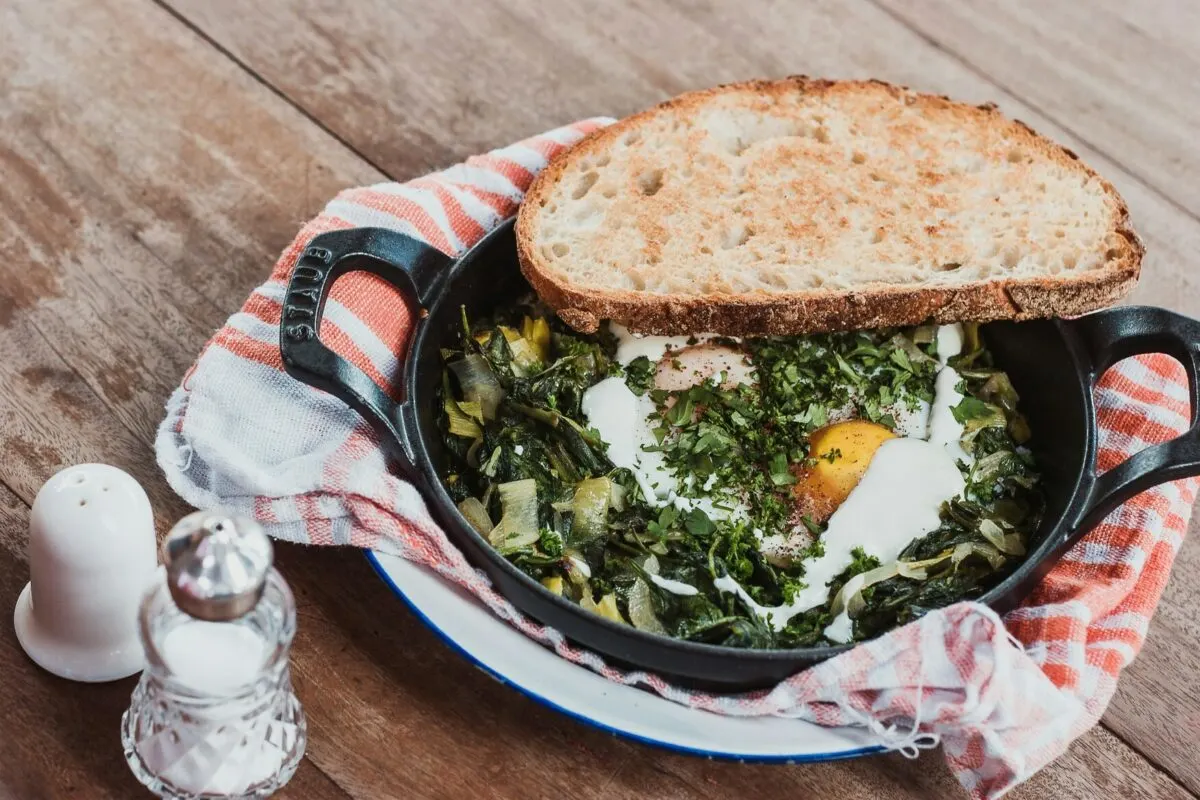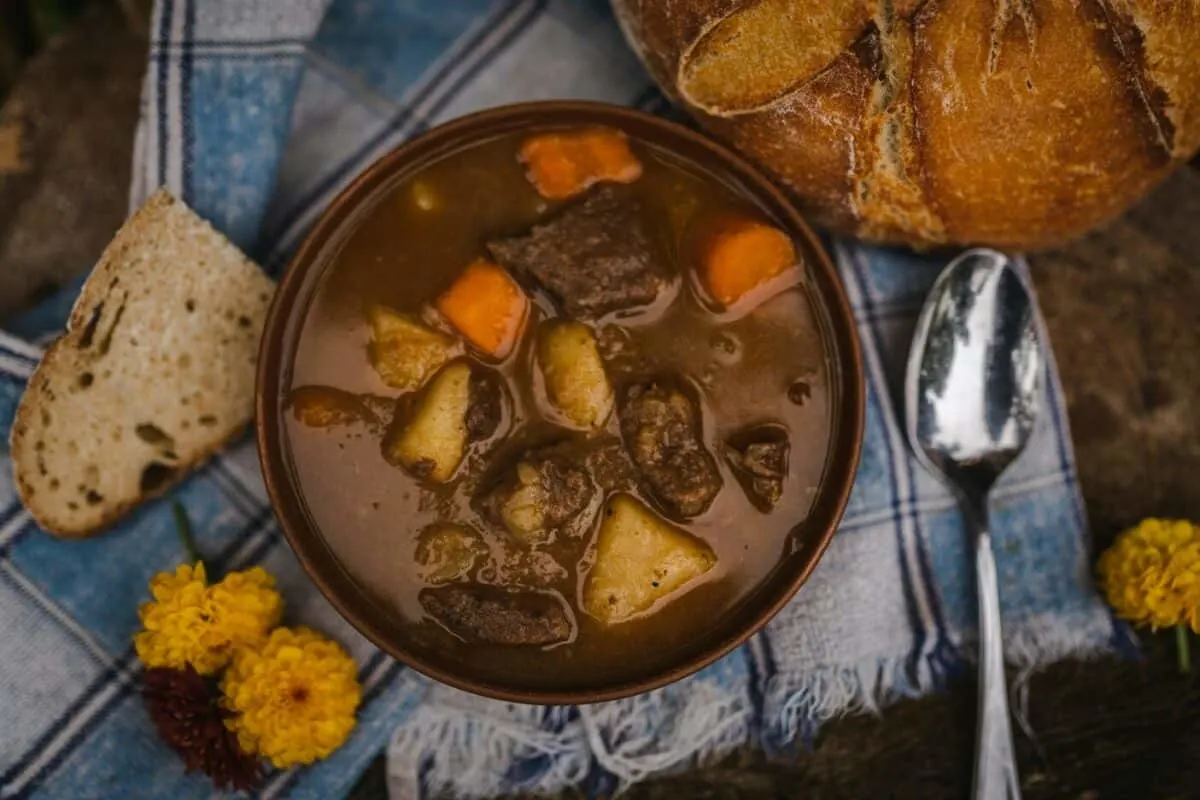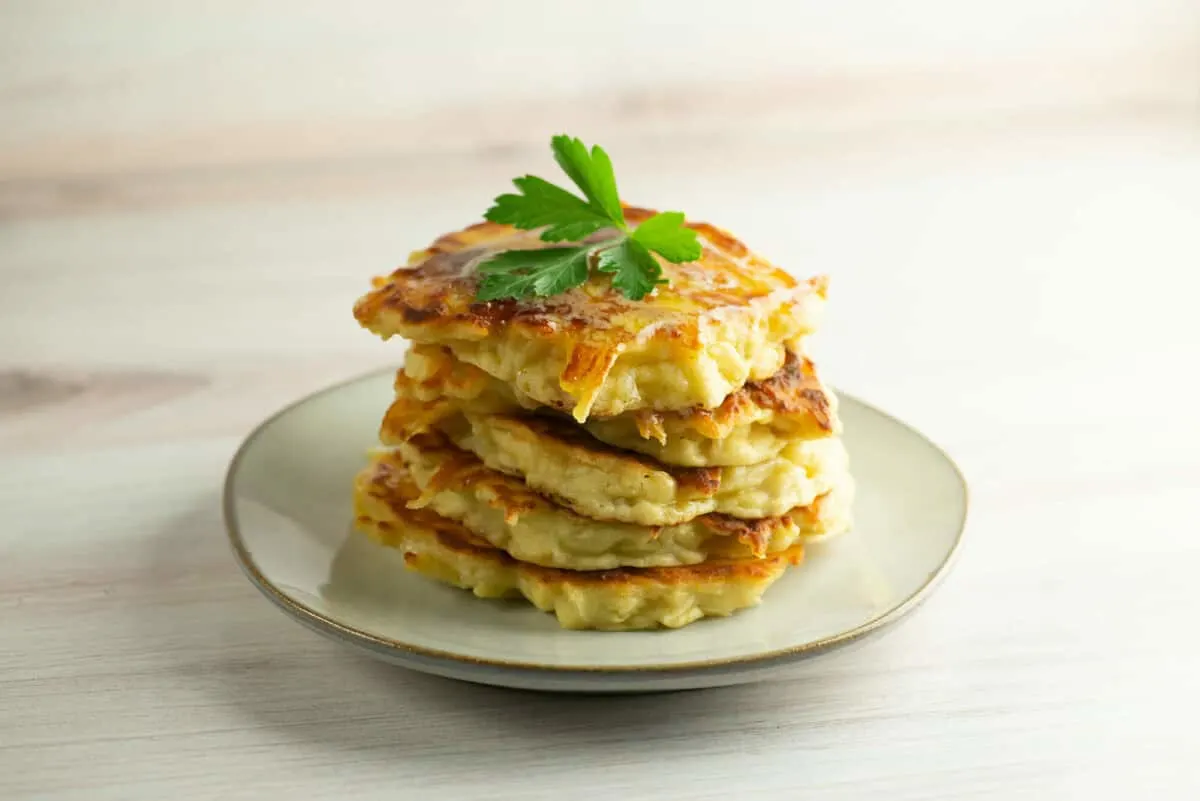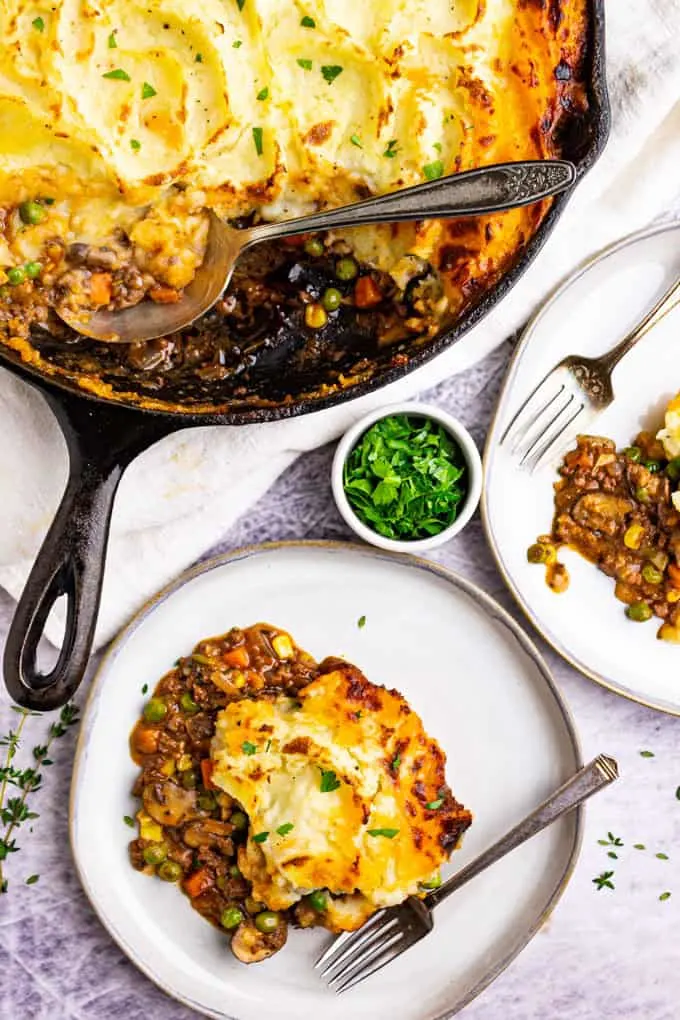
Ireland might not be famous for its cuisine, but that’s a big mistake! If you love comfort food, you’ll love Irish food. The island’s traditional dishes are packed with flavor, history, and family love.
Irish food has evolved over centuries, blending local ingredients like fresh fish, seafood, and hearty crops with influences from Britain and Europe.
Thanks to its rich farming traditions, classic Irish recipes like Irish stew, boxty, bacon and cabbage, and soda bread showcase the best of Irish cooking. These traditional dishes are as popular as ever, so don’t miss out on tasting them when you visit!
Why Do People Love To Visit Ireland?
Did you know the island of Ireland splits into two parts? Northern Ireland is part of the United Kingdom, but the Republic of Ireland is its own country, with Dublin as the capital city.
The Irish are known for their love of “craic,” which means having a fun time and great chat. You’ll see this friendliness and humor everywhere, from pubs to shops.
But what about it that makes people love to come here? It’s not just the stunning scenery, like rolling green hills, dramatic seaside cliffs, and rugged peaks. With around 30,000 castles and vibrant cities like Dublin, Belfast, Galway, and Cork, there’s a lot to explore.
Ireland’s festivals, from TradFest in January to the International Oyster Festival in September, add to the charm. And let’s not forget the delicious local food and warm Irish hospitality — definitely a must-experience!
What Are Traditional Irish Foods?
Irish cuisine is about simple, hearty dishes made with fresh, local ingredients. When you visit Ireland, forget fancy food — think cozy comfort like a pint of Guinness and a filling stew. Their traditional dishes are like a warm hug for your taste buds. Here’s what you absolutely must try on your trip!
And don’t hesitate to ask for recommendations from locals. They often know the best spots for authentic Irish cuisine.
1. Irish Stew

Irish stew started as a simple, hearty dish made with mutton, potatoes, and onions, perfect for families with limited resources. Born in the 17th or 18th century, it was a staple for shepherds and farmers needing a filling meal.
Irish stew is still a national favorite, symbolizing the island’s warmth and tradition.
2. Irish Soda Bread
The Irish take their St. Patrick’s Day feast seriously, and no celebration is complete without soda bread. It’s the must-have side dish that makes any Irish dinner truly special!
Irish soda bread first appeared in the 1830s when baking soda was new in the U.K. During tough times, it became a go-to dish because it was cheap and easy, needing just wheat flour, baking soda, salt, and soured milk. In remote areas, families made it using iron pots over open fires. It’s currently a key part of St. Patrick’s Day and a staple in Irish cuisine.
Even if it’s not St. Patrick’s Day, you’ve got to try quick bread when you’re in Ireland. Grab a loaf of Market 32 Irish Soda Bread online or at your local store — it’s a tasty treat you don’t want to miss!
3. Ulster Fry
For a perfect start to your day exploring, try the Ulster Fry—a hearty Northern Irish breakfast that’ll keep you energized.
The Ulster Fry is a hearty Northern Irish breakfast that truly captures the region’s warmth and tradition. This filling meal includes juicy sausages, fried eggs with runny yolks, and mushrooms for a fresh twist.
It’s a classic farmer’s breakfast that’s both satisfying and delicious, perfect for fueling up on a busy day. Don’t forget Irish breakfast tea with your Ulster Fry, the traditional morning beverage all over Ireland.
4. Boxty

Do you know what they say in Ireland? “Boxty on the griddle, boxty in the pan, if you can’t make boxty, you’ll never get a man.”
But superstitions aside, if you’re a pancake fan (who isn’t?), don’t miss Boxty when you’re in Ireland — this dish made with grated and mashed potatoes is a true local favorite showcasing the country’s love for its most famous crop. If you’re familiar with latkes or Jewish potato pancakes, Boxty is somewhat similar.
This traditional Irish potato pancake has roots in rural Ireland, where potatoes were a staple. It’s traditionally associated with Halloween, as potatoes are harvested in autumn. The dish’s name comes from the Irish phrase “arán bocht tí,” meaning “poor-house bread,” reflecting its humble origins.
5. White Pudding
You’ve probably heard about black pudding, but what about white pudding? This special dish is a quintessential part of a traditional full Irish breakfast, and it’s an experience you shouldn’t miss if you’re visiting the Emerald Isle.
White pudding is made with oatmeal, bread, pork, and fat, all stuffed into a sausage casing. It’s usually sliced, fried, or grilled, offering a milder taste with hints of onion and spices. White pudding is lighter and more delicate than blood sausage, which has a stronger, earthier flavor.
6. Dublin Coddle
Dublin Coddle is a classic Irish stew from the 18th century. It’s a hearty, comforting dish loved by many.
It’s a filling one-pot wonder made with simple ingredients like pork sausage, bacon, potatoes, and onions. The beauty of coddle lies in its simplicity — the flavors meld together perfectly during slow cooking, creating a rich and comforting stew. It’s the kind of dish that warms you from the inside out, perfect for chilly Irish evenings.
So, when in Dublin, don’t miss the opportunity to savor this authentic Irish classic.
7. Smoked Salmon
Ireland’s pristine waters are renowned for producing some of the world’s finest salmon. This smokey, buttery fish is a must-try when visiting the charming Island.
Irish smoked salmon goes great on a salad, with cream cheese and bread, or at a festive brunch. Legends say that Druids offered oak-smoked salmon to the god Dagda over two thousand years ago, and it continues as a delicious Celtic symbol of tradition and hospitality.
8. Irish Fish Chowder
Surrounded by the Atlantic Ocean, Ireland boasts an abundance of fresh seafood, the star of this hearty and flavorful dish.
Seafood chowder is a favorite in Irish pubs and restaurants. This comforting bowl of goodness combines fresh and smoked fish with earthy potatoes, sweet onions, celery, corn, and other vegetables like carrots. It’s a warming, nutritious meal, especially on chilly days.
9. Colcannon Mash
Colcannon, named after the Irish word for cabbage, is a nourishing mix of mashed potatoes, cabbage (some use kale), and scallions. Often paired with bacon or sausage, they say this hefty dish is a true taste of Irish hospitality, perfect for soothing the belly and the soul.
To experience authentic colcannon, you’ll want to visit traditional pubs or restaurants in Northern Ireland. Many offer classic Irish fare, including this beloved dish.
10. Tayto Crisps
Well, who can resist a bowl of potato chips once in a while? In Ireland, it won’t be long before you see, taste, or hear the crunch of a salty Tayto crisp. In Ireland, what Americans call “chips” are called “crisps.”
The story of Tayto crisps started in the 1950s when Joe ‘Spud’ Murphy brought a mobile crisp machine from the U.S. to Dublin. From there, Tayto grew into Ireland’s favorite snack brand, now offering a wide range of flavors. You can find Tayto crisps everywhere, from corner shops to pubs and restaurants.
11. Shepherd’s Pie

You may have had shepherd’s pie before, but traditional shepherd’s pie in Ireland has a different historical twist.
Cottage Pie, born in the 19th-century British Isles, was a thrifty dish made from leftover beef and topped with mashed potatoes. When the British occupied Ireland, they brought this dish, but the Irish preferred lamb for economic reasons. Hence, Shepherd’s Pie evolved, using lamb instead of beef.
It’s a hearty combination of tender meat (traditionally lamb, but beef is also popular nowadays, which is contradictory to a hundred years ago), rich gravy, and a creamy mashed potato topping.
12. Irish Barmbrack
Irish barmbrack is a must-try for any visitor to Ireland, especially around Halloween. This rich, fruity bread is a beloved tradition, often enjoyed with a cup of tea.
Its origins can be traced back to ancient Celtic rituals, where it was baked as an offering to the spirits. Today, barmbrack is still associated with All Hallows Eve, and it’s often enjoyed with a bit of fortune-telling. Small objects like a coin, ring, or pea are traditionally hidden inside the bread. Finding a ring is said to predict marriage within the year, while a coin signifies wealth.
The good thing is, you can find Irish barmbrack in most bakeries and cafes throughout Ireland! You will surely find this delicious treat if you’re exploring Dublin, Cork, or the countryside.
Popular Irish Drinks
After tasting Ireland’s mouthwatering food, it wouldn’t be complete without the top-notch drinks.
Guinness: Ireland’s pride, Guinness, has been a cultural icon for over 300 years. This dark, creamy, stout beer has coffee, chocolate, and roasted barley flavors. And with the Dublin St. James Gate brewery lease still running, there’s plenty more of this beloved brew to enjoy.
Whiskey: Ireland introduced whiskey to the British Isles. Irish whiskey, triple-distilled from unmalted barley, ages for at least three years. It’s known for its smooth, light, and fruity flavor with hints of vanilla and honey, perfect for whiskey lovers and newbies alike.
Irish Coffee: This classic Irish drink is a warm, comforting blend of hot coffee, Irish whiskey, sugar, and cream. It’s a cozy treat that captures Ireland’s welcoming spirit.
Frequently Asked Questions (FAQs) About Irish Food
What is the National Food of Ireland?
Irish stew is Ireland’s national dish, famous for its hearty mix of mutton, potatoes, and vegetables. Since around 1800, it’s been a comforting staple, perfect for transforming tough cuts of meat into a tender, tasty treat. Slow-cooked to perfection, it showcases the best of traditional Irish cooking.
What is a Typical Irish Diet?
The traditional Irish diet heavily featured dairy, thanks to Ireland’s lush pastures and cattle farming. For centuries, dairy products like butter and cheese were staples, alongside hearty oats and barley, which could be stored and used in various dishes. Beef was a winter treat, while vegetables like cabbage, onions, and parsnips were common. With the arrival of the potato in the 1600s, Irish diets shifted significantly. For drinks, traditional favorites included ale, mead, and sloe wine.
This article originally appeared on Travel Binger.

Hannah Healy is the owner and founder of Healy Eats Real, a website that has provided recipes and lifestyle content for over ten years. She is the published author of The Ultimate Paleo Cookbook and an avid writer in the food, health, and travel spheres. Hannah’s work has been featured on the Huffington Post, Buzzfeed, Redbook, Fitness, and MSN.


